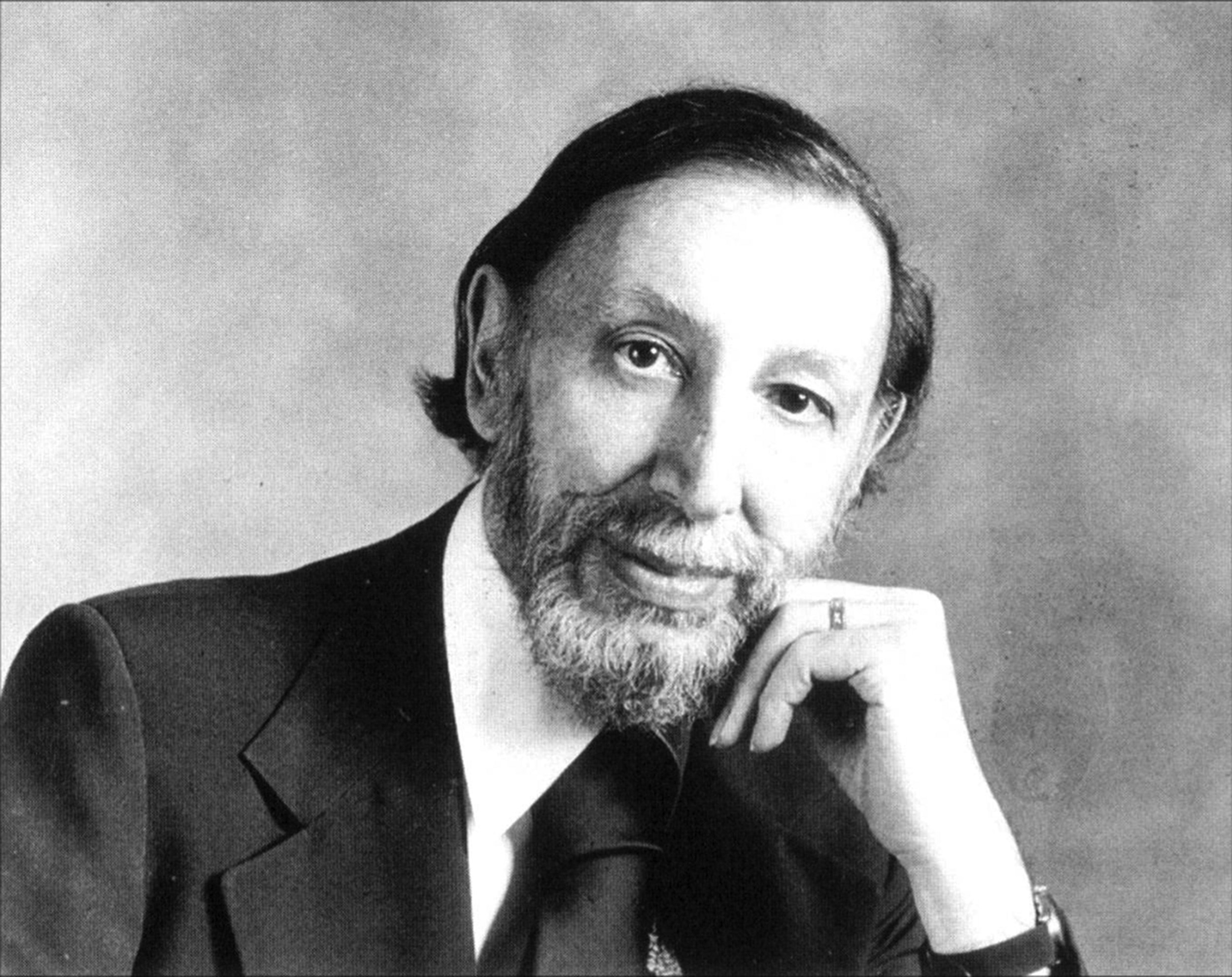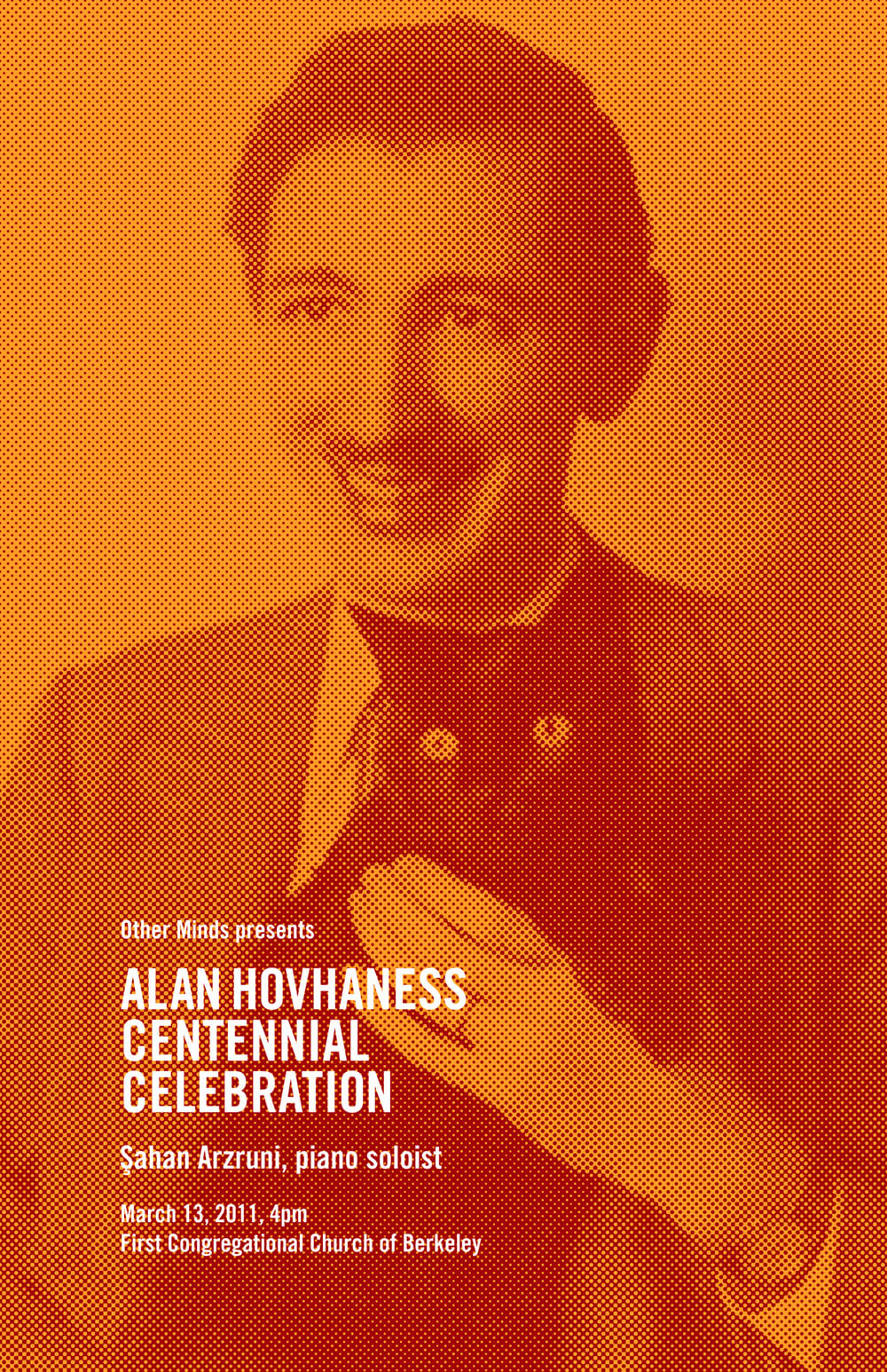
When classical composer Alan Hovhaness died in 2000, he left a legacy that reflected both his prodigious composing abilities as well as his trailblazing interest in music from around the world. Having written over 400 works that included operas, symphonies, concertos, oratorios, chamber works, and orchestral pieces, Hovhaness incorporated Indian, Korean, Japanese, and Armenian influences into his repertoire, forming a canon that is best described as world classical music. Considering his ability to shape the forms of classical music to his diverse inspirations, Hovhaness was not taken seriously by many in the classical world. However, his insistence on writing music that was accessible to both performers and listeners has ensured that his works—many of which have never been performed in public—will continue to influence future generations of classical musicians.
Alan Vaness Chakmakjian was born on March 8, 1911, in Somerville, Massachusetts, a nearby suburb of Boston and the home of Tufts University, where his father taught chemistry. While the elder Chakmakjian was proud of his Armenian heritage, the future composer’s mother, who was of Scottish descent, discouraged him from taking an active role in Armenian ethnic and religious life during his childhood. However, later Hovhaness would turn to his Middle Eastern ethnic identity as a source of inspiration in his music, beginning with his Symphony No. 1,“Exile Symphony,” in 1936-37.
Hovhaness’ musical aptitude was evident from a strikingly early age. By the time he was five he had made up his own system of musical notation; essentially, he had learned music composition on his own before undertaking any formal training. He soon began to study music in earnest, adopting the pseudonym “Hovhaness” at the suggestion of one of his teachers. Hovhaness was also drawn as a teenager to the Armenian community in Boston and gained experience with improvising on traditional Armenian music as the organist in a local Armenian church.
Acknowledged as a prodigy during his childhood for his obvious talent, Hovhaness was accepted for study at the New England Conservatory of Music (NEC) on a scholarship in 1932. Founded in Boston in 1867, NEC ranked as one of the leading music schools in the country. During his two years there, Hovhaness studied with prolific composer Frederick Converse (1871-1940). Hovhaness supplemented this formal training with another prestigious appointment in 1942 at the Berkshire Music Center, known simply as “Tanglewood.” Established in 1936 as the summer home of the Boston Symphony Orchestra, Tanglewood brought together some of the best classical musicians of the day for seminars and performances. While at Tanglewood, Hovhaness studied primarily with Czech composer Bohuslav Martinů (1890-1959), who came to the United States as an exile from Nazi Europe.
FIRST SUCCESS WITH LOUSADZAK
In the 1940s, Hovhaness worked as an organist and teacher in addition to beginning his prolific career as a composer. In his first phase as a composer, Hovhaness wrote in the Baroque and Romantic styles that continued to dominate classical music. As he matured as a composer, however, he increasingly turned to more experimental composition techniques, including senza misura in his piece Lousadzak (“Dawn of Light”) for piano and string orchestra in 1944. In the work, Hovhaness repeated melodies at different tempos with various parts of the orchestra, creating a layer of sound that was both mysterious and mystical. Despite the seeming complexity of the work, however, Hovhaness more often composed pieces that were deliberately easy to play, a result of his insistence on making music that was accessible to musicians and listeners alike.
In June of 1945, the New York premiere of Lousadzak marked Hovhaness’ breakthrough with critics and the public. As reviewer and composer Lou Harrison told the New York Times more than 50 years after attending the event, “It was ravishing. . . He deserves major status, because he wrote some of the best music around. When he first came along, there were the 12-toners, and there were the Americanists, and neither camp knew what to make of him.” As Hovhaness himself recalled in a National Public Radio profile, “I believe very much in melody, but melody as far as the usual Western scales, I felt, was exhausted. All good melodies have been written by Schubert and Mozart and the old composers. So I thought I’ll try using different scales.”
As Harrison acknowledged, some were put off by Hovhaness’ style in the 1940s as it went against the grain of contemporary classical music. One frequently repeated comment about his Symphony No. 1 had New York Philharmonic conductor Leonard Bernstein dismissing it as “filthy ghetto music.” Apparently, Hovhaness took such criticisms to heart. At some point during the mid-1940s, he burned most of his compositions, an act that he undertook as a catharsis and rebirth. Indeed, the composer increasingly incorporated new musical styles from around the world into his works during the 1940s, an era that became known as Hovhaness’ “Armenian Period.” Drawing inspiration from Armenian folk music and traditional musical themes, Hovhaness wrote works for trumpet and strings (Khrimian Hairig in 1944), symphonies (Symphony No. 8, “Arjuna” in 1947), and other miscellaneous ensemble pieces (Kohar in 1946).
WORLD CLASSICAL MUSIC
Hovhaness benefited from a number of important grants during the 1950s. As a Fulbright and Rockefeller Foundation scholar, he traveled throughout Asia, including South Korea, Japan, and India. The results of these travels were immediately apparent in his music, as Hovhaness began to write in the style of Indian ragas—ancient music with traditional melodies–and gagaku–the traditional music of the Japanese court—as well as other works for Korean percussion and strings. His best known work, Symphony No. 2 (“Mysterious Mountain”) also dates from this period. Written in 1955, it demonstrates the other dominant interest in Hovhaness’s life: a concern with spirituality. While some earlier works carried explicitly religious themes, Hovhaness increasingly explored the connection between the environment and the human spirit. Later works included And God Created the Great Whales in 1970, a sort of New Age orchestral piece with prerecorded humpback whale sounds intended for the popular audience, and Symphony No. 50 (“Mount St. Helens”). As his Los Angeles Times obituary recounted, Hovhaness once remarked, “I love mountains. They’re symbolic of the meeting of Earth and heaven, man and God. They’re also symbolic of the mountains you seek within yourself.”
Hovhaness received a drubbing from the classical world for And God Created the Great Whales. Out of step with most critics, Hovhaness was accused of being too eager for a popular audience and not concerned enough with writing serious classical music. Yet the composer grew less concerned with critical attention as his career progressed. “My purpose is to create music, not for snobs but for all people—music which is beautiful and healing, to attempt what old Chinese painters called spirit resonance in melody and sound,” he was quoted in the Los Angeles Times. In fact, Hovhaness deliberately removed himself from the center of the classical music world to avoid the distractions and pretensions that it often entailed. Although he lived in New York City for much of the 1950s, Hovhaness moved to Seattle, Washington, in 1966, where he became a composer-in-residence with the Seattle Symphony Orchestra.
CALLED “MAJOR PIONEER”
Hovhaness’ output remained impressive even in his final decades. The total number of works he composed exceeds 400, with more than 60 symphonies, nine operas, two ballets, 100 chamber pieces, and 23 concertos. Even a year after the composer’s death his wife, Hinako Fujihara Hovhaness, continued to find original compositions in the piles of papers left behind.
Although Hovhaness’ output was voluminous, his place in the modern classical music canon has yet to be determined. As David Raymond pointed out in a 1998 American Record Guide review of a Hovhaness release, “This composer’s music can be bland and endless, but when he’s good, he’s exquisite.” Mark Swed of the Los Angeles Times admitted, “In most histories of American music, Hovhaness is a minor character,” but he nevertheless predicted that “Hovhaness was a crucial figure in the whole development of the world and spiritual traditions now so much a part of the musical mainstream. The twenty-first century may well count him as a major pioneer.”
Alan Hovhaness died on June 21, 2000, in Seattle, Washington, at the age of 89.
Notes by Timothy Borden
ALAN HOVHANESS CENTENNIAL CELEBRATION
Şahan Arzuni, Piano
Introduction by Charles Amirkhanian
Achtamar (1947)
Lake of Van Sonata (1946, rev. 1959)
a) Rubato – Allegro
b) Solenne – Allegro
c) Rubato
Mystic Flute (1937)
Two Ghazals (1933, rev. 1966)
Yenovk (1946; rev. 1951), World premiere
a) Fantasy
b) Canzona
c) Jhala
d) Canzona
e) Ballata
f) Fugue
KOMITAS: Shoror of Mush (1906-16)
Laona (1956), World premiere
Pastoral No. 1 (1952)
Visionary Landscapes (1967)
a) Allegro rubato
b) Allegretto
c) Evening Bell
d) Allegro brillante
c) Midnight Bell
Suite (1954, rev. 1967)
a) Doloroso
b) Invocation Jhala
c) Mysterious Temple
Macedonian Mountain Dance (1937)
Achtamar
Click here to download a PDF copy of the program for Alan Hovhaness Centennial Celebration.
Video From The Event
Alan Hovhaness
Mystic Flute (1937) and Two Ghazals (1933)
Two pieces by composer Alan Hovhaness, introduced and played by pianist Şahan Arzruni during this Centennial event in honor of the composer, produced by Other Minds. The concert was held at the First Congregational Church of Berkeley on March 13, 2011.
Alan Hovhaness
Laona (1956) World premiere
Şahan Arzruni plays Laona, by Alan Hovhaness, during a Centennial event in honor of the composer, produced by Other Minds. The concert was held at the First Congregational Church of Berkeley on March 13, 2011. This is the world premiere for this piece, written in 1956.
Audio From The Event
Alan Hovhaness
Achtamar
This piece, a composition by Alan Hovhaness, was recorded live, March 13, 2011 at the First Congregational Church of Berkeley, during the Alan Hovhaness Centennial Celebration, an Other Minds production. Pianist is Şahan Arzruni.
Alan Hovhaness
Macedonian Mountain Dance
This piece, a composition by Alan Hovhaness, was recorded live, March 13, 2011 at the First Congregational Church of Berkeley, during the Alan Hovhaness Centennial Celebration, an Other Minds production. Pianist is Şahan Arzruni.
Full Concert Audio & Video
Here’s the audio and video of the entire concert, a celebration of composer Alan Hovhaness, from our archive on the Internet Archive. Recorded March 13, 2011 at the First Congregational Church of Berkeley, CA. The pianist is Şahan Arzruni.



